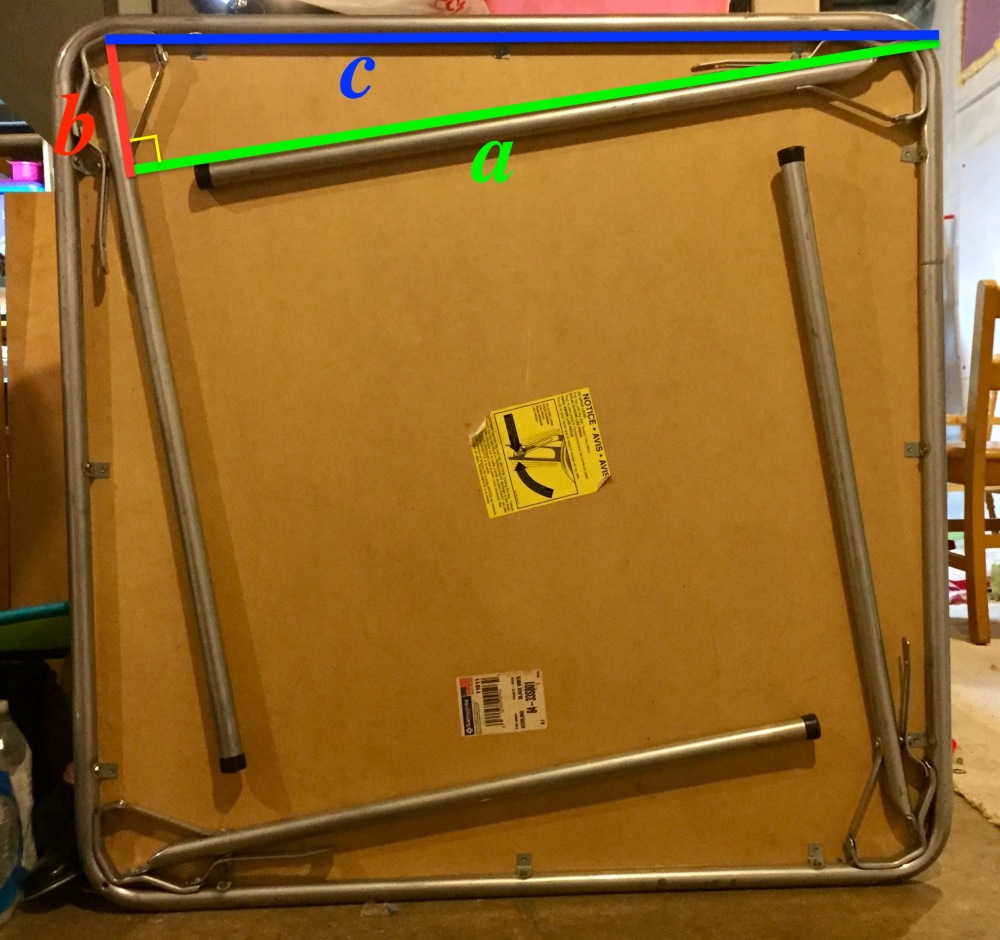We own a standard card table that we leave tucked away in the basement until the kids want to have a lemonade stand on the front sidewalk or we need the extra table space for a large Thanksgiving dinner. It is the standard kind with legs that fold underneath it so it is easy to store.
Interestingly, when the legs are folded, the underside of the table encodes a famous proof of the Pythagorean theorem.
As we see in the photo below, the edge of the table and two adjacent legs form a right triangle with legs a and b and hypotenuse c. The table is square, so it has area But, the table is divided up into four right triangles each having area
and a smaller square of area
Thus,
Ta da!

After I posted this on Twitter I found out that Debra Borkovitz made the same observation about her card table.
Excellent presentation!
Here’s another, as an MAA Found Math in 2012.
http ://www.maa.org/community/columns/maa-found-math/maa-found-math-2012-week-36
Thanks! I thought about the “found math” site when I took the picture.
Pretty neat!
>